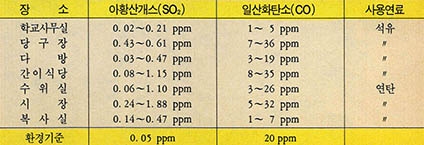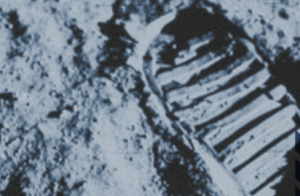수프가 무엇인지는 누구나 잘 알고 있다. 수프란 진한 국물속에 다양한 재료들이 섞여 있는 음식이다. 우리는 수프를 즐겨 먹을 뿐 아니라 맛있는 수프는 하늘이 내려준 좋은 선물이라고 생각한다.
그러나 수프라는 용어는 단순히 맛좋은 국물이라는 차원을 넘어 보다 많은 사물을 의미하게 되었다. 예를들어 지구가 만들어진 지 얼마되지 않고 생명체가 존재하지 않았을 때는 태초의 대기 및 바다속의 단순한 화합물에 내리쬐는 적외선의 작용이 보다 복잡한 분자들을 형성시켰다.
그렇다면 그 바다는 그러한 분자들의 '수프'라고 생각될 수 있을 것이며 따라서 '바다수프'라고 불릴 수도 있는 것이다. 바다는 오늘날까지도 수프와 같은데 다만 생명체가 존재한다는 점이 다를 뿐이다. 태초의 바다 수프속엔 생물이란 없었으며 그 국물은 더욱 진했다. 바로 이 바다 수프로부터 원시형태의 생명체들이 처음으로 등장했던 것이다.
생명의 근원을 이렇게 설명하는데 모두가 다 동의하지는 않지만 이는 가장 널리 알려진 학설중의 하나이며 우리는 '바다수프'의 뜻을 잘 알게 되었다.
그러나 바다수프조차도 수프유형의 시초는 아니다. 만약 우주가 천문학자들이 확신하고 있는 것처럼 팽창하고 있고 우리가 시간을 거꾸로 돌이켜 우주의 어린시절을 상상할 수 있다면 우주가 축소되어가는 모습을 그려볼수 있을 것이다. 우주는 서서히 작아져가면서 그 밀도가 높아지고 더욱 뜨거워지며 우리가 대폭발을 향해 시간을 더욱 돌이키노라면 우주의 온도는 수조도에 이르게 되고 결국 모든 입자들이 그 조직형태를 잃고마는 조그마한 우주로 변신하게 된다. 그 어떠한 분자나 원자도 없이 주로 커크나 특별한 입자들(글루온)처럼 가장 초기형태의 입자들만이 서로 엉겨 붙어있는 모습이다.
이는 '우주수프'라고 하는데 우리는 천문학자들이 이 수프에 대해 과연 얼마나 알고 있는지 물어볼 만하다. 그러나 이 질문에 대한 답은 "별로 없다"는 것이다.
그렇다면 이 우주수프에 관해 천문학자들이 보다 잘 알수 있는 방법은 무엇일까? 한가지 방법은 현재의 우주로부터(현재의 우주에 관해서라면 상당한 지식을 갖고 있으니까) 출발하여 거꾸로 되돌아가 온도가 올라갈때마다 무슨 일이 발생하는가를 따져보는 것이다. 이러한 진행은 물론 불확실성으로 가득차게 된다.
또 다른 방법은 우주수프의 초현미경적인 축소판을 만들어서 무슨 일이 나타나는가를 관찰하는 것이다. 이렇게 할 수 있는 방안 중 하나는 무거운 입자들을 함께 깨부수는 것이다. 이 과정에서 이 입자들은 서로 밀려나면서 우주수프를 재생할는지도 모른다.
듀크대학교의 피터 레바이와 번트 밀러는 만일 우주수프가 그처럼 재생된다면 밀려들어 부서지는 입자들의 방향으로부터 수직방향으로 다양한 입자들이 매우 빠른 속도로 빠져나올 것임을 믿게 되었다. 똑같은 속도란 점이 그들의 이론이 주장하는 바이기도 하다.
레바이와 밀러는 양성자와 반양성자라는 매우 단순한 입자들로 시작했다. 그들은 이 입자들을 놀랄만한 속도로 깨부수었는데 아닌게 아니라 그들의 이론대로 입자들이 분출되었다. 즉, 우주수프를 만든 것이다.
다른 물리학자들은 보다 무거운 원자들을 이용해 실험을 해오고 있으므로 이에따라 그 결과로부터 훨씬 정확하고 많은 사실을 파악할 수 있는 보다 강력한 형태의 우주수프의 재생을 기대해 볼만하다.
만약 이러한 실험이 성공한다면 그것이 우리에게 주는 의미는 무엇일까?
우선 모든 자연의 힘, 즉 전자기력과 핵력(강한 핵력과 약한 핵력), 중력을 하나의 공식으로 설명함으로써 그동안 물리학자들이 찾고 있었던 힘의 대통합이론을 만들 수 있다는 점이다.
또한 다른 의문점들에 대해서도 답을 해 줄 수 있다.
도대체 은하계가 어떻게 형성되었던가는 그동안 가장 골치아픈 의문이었다.
우주수프는 매우 균등하게 분포되어 있었다. 그렇다면 그것이 어떻게 그렇게도 불균등한 은하계와 별들의 분포로 깨어질 수 있었을까?
지난 1989년, 닐 투록은 대폭발직후 처음 1초후의 우주수프는 일종의 거품을 산출해 냈는데 이로부터 은하계가 생성되었다고 발표했다. 사실 투록의 계산은 그처럼 만들어진 은하계의 크기가(현대 우주론의 가설과) 일치함을 보여주고 있다.
우주의 시작 직후 잠깐동안 밖에 존재하지 않았던 우주수프처럼 참으로 비밀스러운 것으로부터 이토록 엄청난 결과가 도출되었다는 것은 곰곰히 생각해 보노라면 기막힌 일이 아닐 수 없다.
그러나 바로 그 점이 과학이라는 게임의 가장 흥미로운 측면이다. 우리는 그저 막연한 호기심 때문에 무엇인가를 탐구하곤 하는데 그 결과는 우리가 답이 있으리라고 기대조차 하지 않았던 문제에 대한 답을 주곤 하는 것이다.
과학의 역사를 살펴보면 그와 같은 사례들이 얼마든지 있다. 최초의 현미경 사용자중 한명이었던 앤톤 반레벤호크는 박테리아를 처음으로 발견한 인물이었다. 그는 박테리아가 무엇인지 아무런 지식도 없었을 뿐더러 그 당시는 모두가 그랬다. 그 박테리아들은 그저 살아 움직이는 조그마한 알갱이들 정도로 여겨졌었다.
그러나 시간이 지나면서 루이 파스퇴르는 그 조그마한 알갱이들이 병을 옮기기도 하고 또한 우리가 잘 다루면 병으로부터 예방(혹은 치료) 시켜주어 인간의 생명이 두배로 늘어나는 결과를 가져온다는 사실을 밝혀냈다.
과학적 발견이 어떻게 서로 얽혀 가며 우리를 새로운 세계로 이끌지 자신있게 말할 수 있는 사람은 없다. 하기야 누가 그렇게 말하고 싶어할 것인가? 재미만 잃게 할테니 말이다.
I guess we all know what soup is. It is a rich random mixture of many ingredients circulating in a fluid. We eat soup and a good soup is one of the great gifts of the gods.
However, soup has been expanded as a term to include many other things than a good minestrone. For instance, it is possible that when the Earth was young and there was no life upon it, the action of ultraviolet rays on the simple compounds in the primordial atmosphere and ocean built up more complicated molecules.
The ocean could then be viewed as a "soup" of such molecules, an "ocean soup", if you will. The ocean is still a kind of soup today, but living organisms are present. In the original ocean soup, there were no organisms and the mix was thicker. It was out of this ocean soup that the first primitive forms of life appeared.
Not everyone agrees with this picture of the origin of life but it has been a popular version, and we all know what an "ocean soup" is.
However, even the ocean soup is not the first of the species. If the universe is expanding as astronomers are certain it is, then if we reversed time and imagined the universe growing younger, it would be contracting. It would slowly get smaller, and denser, and hotter and as we moved backward toward the big bang, the temperature would rise into trillions of degrees and we would have a small universe in which all the particles had lost their organization. No molecules, no atoms, just primeval particles, mostly quarks and the particles("gluons") that hold them together.
This is the "cosmic soup", and you might ask what do astronomers know about this soup. The answer is, "Nothing much."
How do they go about finding more? One way is to start with the universe as it is today(and we know quite a bit about that) and then work out way backward, trying to figure out what happens with each increment of temperature. Such a course is, of course, fraught with uncertainties.
Another way is to try to create a submicroscopic piece of cosmic soup and see what happens. One way to do this is to smash together heavy particles. In pushing together, they may create the cosmic soup.
Peter Levai and Berndt Miller of Duke University decided that if a cosmic soup were in this way created, it should send out particles of many kinds at high velocities in a direction perpendicular to the incoming colliding particles. All the velocities should be the same-at least so the theory states.
Levai and Miller began with very simple particles: protons and antiprotons. They smashed them together at huge velocities and sure enough, particles were emitted just as the theory predicted. Apparently, they had formed a cosmic soup.
Other physicists are still working with heavy atoms, and one would expect that the cosmic soup would then be produced in more powerful fashion so that the results could be more definite and informative.
And suppose all this works, what do we get out of it?
For one thing, it will help us work out a grand unified theory that combines all the forces of nature: electromagnetic, nuclear(strong and weak) and gravitational under a single set of equations, something physicists have been searching for years.
For another, it may answer other questions as well.
One of the most annoying questions is just how the galaxies formed. The cosmic soup is very evenly distributed. How, then, could it break up into such unevenly distributed galaxies and stars?
Neil Turok in 1989 suggested that the cosmic soup in the first second after the big bang produced a kind of froth, out of which the galaxies formed. Apparently, Turok's calculations showed that the galaxies that formed would be just the right size.
It is amazing, when you stop to think of it, how something so arcane as the cosmic soup, which only existed in the first moments of the universe, should have such consequences.
However, that is one of the most exciting aspects of the game of science. You can investigate something out of the sheerest curiosity and it may turn out to answer questions you had never expected to be answered.
There have been numerous examples of this in science history. Anton van Leeuwenhoek one of the very early microscopists, was the first to detect bacteria. He hadn't the faintest idea of what they were, nor did anyone else at the time. They were just tiny specks that might be alive.
Nevertheless, in time, Louis Pasteur showed that those tiny specks carried disease and that by dealing with them properly, such disease could be prevented(or cured) and the result was that the human life-span was doubled.
One can never tell where the twisting line of scientific discovery will lead us. And who would want to? It would spoil all the fun.
(C) 1991, Los Angeles Times Syndicate
그러나 수프라는 용어는 단순히 맛좋은 국물이라는 차원을 넘어 보다 많은 사물을 의미하게 되었다. 예를들어 지구가 만들어진 지 얼마되지 않고 생명체가 존재하지 않았을 때는 태초의 대기 및 바다속의 단순한 화합물에 내리쬐는 적외선의 작용이 보다 복잡한 분자들을 형성시켰다.
그렇다면 그 바다는 그러한 분자들의 '수프'라고 생각될 수 있을 것이며 따라서 '바다수프'라고 불릴 수도 있는 것이다. 바다는 오늘날까지도 수프와 같은데 다만 생명체가 존재한다는 점이 다를 뿐이다. 태초의 바다 수프속엔 생물이란 없었으며 그 국물은 더욱 진했다. 바로 이 바다 수프로부터 원시형태의 생명체들이 처음으로 등장했던 것이다.
생명의 근원을 이렇게 설명하는데 모두가 다 동의하지는 않지만 이는 가장 널리 알려진 학설중의 하나이며 우리는 '바다수프'의 뜻을 잘 알게 되었다.
그러나 바다수프조차도 수프유형의 시초는 아니다. 만약 우주가 천문학자들이 확신하고 있는 것처럼 팽창하고 있고 우리가 시간을 거꾸로 돌이켜 우주의 어린시절을 상상할 수 있다면 우주가 축소되어가는 모습을 그려볼수 있을 것이다. 우주는 서서히 작아져가면서 그 밀도가 높아지고 더욱 뜨거워지며 우리가 대폭발을 향해 시간을 더욱 돌이키노라면 우주의 온도는 수조도에 이르게 되고 결국 모든 입자들이 그 조직형태를 잃고마는 조그마한 우주로 변신하게 된다. 그 어떠한 분자나 원자도 없이 주로 커크나 특별한 입자들(글루온)처럼 가장 초기형태의 입자들만이 서로 엉겨 붙어있는 모습이다.
이는 '우주수프'라고 하는데 우리는 천문학자들이 이 수프에 대해 과연 얼마나 알고 있는지 물어볼 만하다. 그러나 이 질문에 대한 답은 "별로 없다"는 것이다.
그렇다면 이 우주수프에 관해 천문학자들이 보다 잘 알수 있는 방법은 무엇일까? 한가지 방법은 현재의 우주로부터(현재의 우주에 관해서라면 상당한 지식을 갖고 있으니까) 출발하여 거꾸로 되돌아가 온도가 올라갈때마다 무슨 일이 발생하는가를 따져보는 것이다. 이러한 진행은 물론 불확실성으로 가득차게 된다.
또 다른 방법은 우주수프의 초현미경적인 축소판을 만들어서 무슨 일이 나타나는가를 관찰하는 것이다. 이렇게 할 수 있는 방안 중 하나는 무거운 입자들을 함께 깨부수는 것이다. 이 과정에서 이 입자들은 서로 밀려나면서 우주수프를 재생할는지도 모른다.
듀크대학교의 피터 레바이와 번트 밀러는 만일 우주수프가 그처럼 재생된다면 밀려들어 부서지는 입자들의 방향으로부터 수직방향으로 다양한 입자들이 매우 빠른 속도로 빠져나올 것임을 믿게 되었다. 똑같은 속도란 점이 그들의 이론이 주장하는 바이기도 하다.
레바이와 밀러는 양성자와 반양성자라는 매우 단순한 입자들로 시작했다. 그들은 이 입자들을 놀랄만한 속도로 깨부수었는데 아닌게 아니라 그들의 이론대로 입자들이 분출되었다. 즉, 우주수프를 만든 것이다.
다른 물리학자들은 보다 무거운 원자들을 이용해 실험을 해오고 있으므로 이에따라 그 결과로부터 훨씬 정확하고 많은 사실을 파악할 수 있는 보다 강력한 형태의 우주수프의 재생을 기대해 볼만하다.
만약 이러한 실험이 성공한다면 그것이 우리에게 주는 의미는 무엇일까?
우선 모든 자연의 힘, 즉 전자기력과 핵력(강한 핵력과 약한 핵력), 중력을 하나의 공식으로 설명함으로써 그동안 물리학자들이 찾고 있었던 힘의 대통합이론을 만들 수 있다는 점이다.
또한 다른 의문점들에 대해서도 답을 해 줄 수 있다.
도대체 은하계가 어떻게 형성되었던가는 그동안 가장 골치아픈 의문이었다.
우주수프는 매우 균등하게 분포되어 있었다. 그렇다면 그것이 어떻게 그렇게도 불균등한 은하계와 별들의 분포로 깨어질 수 있었을까?
지난 1989년, 닐 투록은 대폭발직후 처음 1초후의 우주수프는 일종의 거품을 산출해 냈는데 이로부터 은하계가 생성되었다고 발표했다. 사실 투록의 계산은 그처럼 만들어진 은하계의 크기가(현대 우주론의 가설과) 일치함을 보여주고 있다.
우주의 시작 직후 잠깐동안 밖에 존재하지 않았던 우주수프처럼 참으로 비밀스러운 것으로부터 이토록 엄청난 결과가 도출되었다는 것은 곰곰히 생각해 보노라면 기막힌 일이 아닐 수 없다.
그러나 바로 그 점이 과학이라는 게임의 가장 흥미로운 측면이다. 우리는 그저 막연한 호기심 때문에 무엇인가를 탐구하곤 하는데 그 결과는 우리가 답이 있으리라고 기대조차 하지 않았던 문제에 대한 답을 주곤 하는 것이다.
과학의 역사를 살펴보면 그와 같은 사례들이 얼마든지 있다. 최초의 현미경 사용자중 한명이었던 앤톤 반레벤호크는 박테리아를 처음으로 발견한 인물이었다. 그는 박테리아가 무엇인지 아무런 지식도 없었을 뿐더러 그 당시는 모두가 그랬다. 그 박테리아들은 그저 살아 움직이는 조그마한 알갱이들 정도로 여겨졌었다.
그러나 시간이 지나면서 루이 파스퇴르는 그 조그마한 알갱이들이 병을 옮기기도 하고 또한 우리가 잘 다루면 병으로부터 예방(혹은 치료) 시켜주어 인간의 생명이 두배로 늘어나는 결과를 가져온다는 사실을 밝혀냈다.
과학적 발견이 어떻게 서로 얽혀 가며 우리를 새로운 세계로 이끌지 자신있게 말할 수 있는 사람은 없다. 하기야 누가 그렇게 말하고 싶어할 것인가? 재미만 잃게 할테니 말이다.
I guess we all know what soup is. It is a rich random mixture of many ingredients circulating in a fluid. We eat soup and a good soup is one of the great gifts of the gods.
However, soup has been expanded as a term to include many other things than a good minestrone. For instance, it is possible that when the Earth was young and there was no life upon it, the action of ultraviolet rays on the simple compounds in the primordial atmosphere and ocean built up more complicated molecules.
The ocean could then be viewed as a "soup" of such molecules, an "ocean soup", if you will. The ocean is still a kind of soup today, but living organisms are present. In the original ocean soup, there were no organisms and the mix was thicker. It was out of this ocean soup that the first primitive forms of life appeared.
Not everyone agrees with this picture of the origin of life but it has been a popular version, and we all know what an "ocean soup" is.
However, even the ocean soup is not the first of the species. If the universe is expanding as astronomers are certain it is, then if we reversed time and imagined the universe growing younger, it would be contracting. It would slowly get smaller, and denser, and hotter and as we moved backward toward the big bang, the temperature would rise into trillions of degrees and we would have a small universe in which all the particles had lost their organization. No molecules, no atoms, just primeval particles, mostly quarks and the particles("gluons") that hold them together.
This is the "cosmic soup", and you might ask what do astronomers know about this soup. The answer is, "Nothing much."
How do they go about finding more? One way is to start with the universe as it is today(and we know quite a bit about that) and then work out way backward, trying to figure out what happens with each increment of temperature. Such a course is, of course, fraught with uncertainties.
Another way is to try to create a submicroscopic piece of cosmic soup and see what happens. One way to do this is to smash together heavy particles. In pushing together, they may create the cosmic soup.
Peter Levai and Berndt Miller of Duke University decided that if a cosmic soup were in this way created, it should send out particles of many kinds at high velocities in a direction perpendicular to the incoming colliding particles. All the velocities should be the same-at least so the theory states.
Levai and Miller began with very simple particles: protons and antiprotons. They smashed them together at huge velocities and sure enough, particles were emitted just as the theory predicted. Apparently, they had formed a cosmic soup.
Other physicists are still working with heavy atoms, and one would expect that the cosmic soup would then be produced in more powerful fashion so that the results could be more definite and informative.
And suppose all this works, what do we get out of it?
For one thing, it will help us work out a grand unified theory that combines all the forces of nature: electromagnetic, nuclear(strong and weak) and gravitational under a single set of equations, something physicists have been searching for years.
For another, it may answer other questions as well.
One of the most annoying questions is just how the galaxies formed. The cosmic soup is very evenly distributed. How, then, could it break up into such unevenly distributed galaxies and stars?
Neil Turok in 1989 suggested that the cosmic soup in the first second after the big bang produced a kind of froth, out of which the galaxies formed. Apparently, Turok's calculations showed that the galaxies that formed would be just the right size.
It is amazing, when you stop to think of it, how something so arcane as the cosmic soup, which only existed in the first moments of the universe, should have such consequences.
However, that is one of the most exciting aspects of the game of science. You can investigate something out of the sheerest curiosity and it may turn out to answer questions you had never expected to be answered.
There have been numerous examples of this in science history. Anton van Leeuwenhoek one of the very early microscopists, was the first to detect bacteria. He hadn't the faintest idea of what they were, nor did anyone else at the time. They were just tiny specks that might be alive.
Nevertheless, in time, Louis Pasteur showed that those tiny specks carried disease and that by dealing with them properly, such disease could be prevented(or cured) and the result was that the human life-span was doubled.
One can never tell where the twisting line of scientific discovery will lead us. And who would want to? It would spoil all the fun.
(C) 1991, Los Angeles Times Syndicate

















